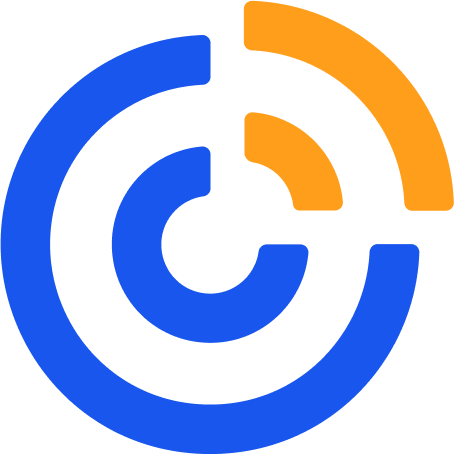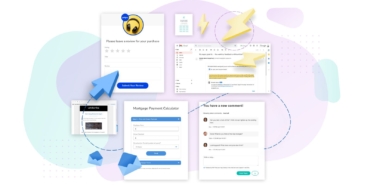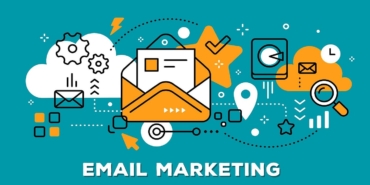Introduction Email marketing remains a cornerstone of digital marketing strategies, but standing out in crowded inboxes requires more than just standard mes
Home » Campaign Management Software
Campaign Management Software
Attention business owners! Are you in search of powerful Campaign Management Software to elevate your marketing efforts? In today’s competitive business landscape, managing multiple campaigns across various channels can be overwhelming. That’s where Campaign Management Software comes in, providing an all-in-one solution to plan, execute, and monitor your marketing campaigns with precision. With features like automated workflows, real-time analytics, and multi-channel integration, this software allows you to streamline your marketing processes, ensuring that your campaigns reach the right audience at the right time. Whether you're running email marketing campaigns, social media ads, or content marketing strategies, Campaign Management Software helps you optimize performance, track ROI, and make data-driven decisions. By centralizing all your campaign data in one platform, you can easily monitor progress, identify trends, and adjust your strategies on the fly. This leads to improved efficiency, better customer targeting, and ultimately, higher conversion rates. Don’t let your marketing efforts fall behind—invest in Campaign Management Software today and watch your business thrive.
List of the Best Campaign Management Software
Goequi offers a robust solution for marketing automation, elevating your email marketing efforts with personalized campaigns and real-time analytics. It provides advanced audience targeting based on user behavior, allowing you to send tailored notifications that boost engagement. With real-time tracking of campaign performance, Goequi enables you to make data-driven decisions for future campaigns, enhancing marketing efficiency and improving customer interaction. This powerful tool is designed to streamline your marketing processes and drive better results.
- Campaign Management
- Costomizable Fields
- Email Marketing
- Contact database
- Data Impost & Export
- Lead Capture
- Contact Management
- Email Management
- Lead Management
SAAS First is a comprehensive solution for SaaS companies, enhancing email marketing capabilities with personalized campaigns and real-time analytics. It allows precise audience targeting based on CRM values or user actions, and sends customizable notifications to maximize engagement. Real-time campaign success tracking enables data-driven decisions for future campaigns, making it an exceptional tool for improving marketing efficiency and customer engagement.
- Campaign Management
- Costomizable Fields
- Email Marketing
- Contact database
- Data Impost & Export
- Lead Capture
- Contact Management
- Email Management
- Lead Management
EngageBay is a simple, powerful, all-in-one marketing, sales and service automation software with free CRM for startups and growing businesses. EngageBay helps you automate your marketing, sales and support by combining lead generation, email marketing, marketing automation, CRM & social media engagement, helpdesk, and ticketing.
- Campaign Management
- Costomizable Fields
- Email Marketing
- Contact database
- Data Impost & Export
- Lead Capture
- Contact Management
- Email Management
- Lead Management
Mailchimp is the #1 Email Marketing and Automations brand for growing businesses. We empower businesses around the world to launch, build, and grow their businesses with world-class marketing technology, award-winning customer support, inspiring content & our data-driven recommendations Over 12 Million businesses including TEDTalks, Shutterstock, Boston Market, Nikon India trust Mailchimp to turn their emails into revenue, grow their audience, & create effective multichannel marketing campaigns
- Campaign Management
- Costomizable Fields
- Email Marketing
- Contact database
- Data Impost & Export
- Lead Capture
- Contact Management
- Email Management
- Lead Management
HubSpot email marketing software makes it easy to start running personalized email marketing campaigns. The intuitive interface makes list and content creation simple, so you're always sending the most relevant information. You can also monitor your email marketing with baked-in analytics, so you can improve your open and click-through rates. Sign up for free, and start running email campaigns that convert and nurture leads, close customers, and contribute to the growth of your business.
- Campaign Management
- Costomizable Fields
- Email Marketing
- Contact database
- Data Impost & Export
- Lead Capture
- Contact Management
- Email Management
- Lead Management
Constant Contact delivers for small businesses and nonprofits with powerful tools that simplify and amplify digital marketing. Whether it's driving sales, growing a customer base or engaging an audience with advanced AI and Automation tools, we deliver the performance and guidance to build strong connections and generate powerful results. For more information, visit www.constantcontact.com.
- Campaign Management
- Costomizable Fields
- Email Marketing
- Contact database
- Data Impost & Export
- Lead Capture
- Contact Management
- Email Management
- Lead Management

ActiveCampaign
The #1 Customer Experience Automation Platform
ActiveCampaign helps small teams power big businesses with the must-have platform for intelligent marketing automation. Customers from over 170 countries depend on ActiveCampaign’s mix of pre-built automations and integrations (including Facebook, Google, WordPress, Salesforce, Shopify, and Square) to power personalized marketing, transactional emails, and one-to-one CRM interactions throughout the customer lifecycle. Learn more and start your free trial at ActiveCampaign.com.
- Campaign Management
- Costomizable Fields
- Email Marketing
- Contact database
- Data Impost & Export
- Lead Capture
- Contact Management
- Email Management
- Lead Management
Forge lasting customer relationships and accelerate growth with Brevo, the most approachable CRM suite. Build brilliant customer experiences across email, SMS, push, and more. Coalesce data sources for precise targeting and a single customer view. Automate, segment, and A/B test for campaigns tailored to your audience.
- Campaign Management
- Costomizable Fields
- Email Marketing
- Contact database
- Data Impost & Export
- Lead Capture
- Contact Management
- Email Management
- Lead Management
Grow your business with MailerLite’s fast and scalable email marketing platform. Create professional newsletters, landing pages & websites using our drag & drop editor (with AI generator) or with pre-designed templates. And manage campaigns on-the-go in the iOS app. Nurture relationships with advanced features like pop-ups, multi-trigger automations, embedded surveys, Facebook custom audiences and auto resend campaigns. Measure performance with detailed reporting inside your dashboard.
- Campaign Analytics
- Content Management
- Landing Page & Web Forms
- Campaign Scheduling
- Customizable Fields
- Mobile Optimization
- CAN - SPAM Compliance
- Event Trigger Actions
- Reporting / Analytics
Latest Trends Related to Campaign Management Software
Integrating Email Marketing with Other Marketing Tools
Introduction Email marketing remains one of the most effective channels for engaging with customers and driving conversions. However, its full potential is
AI and Machine Learning in Email Marketing: Revolutionizing Campaigns and Personalization
In the ever-evolving landscape of digital marketing, Artificial Intelligence (AI) and Machine Learning (ML) have emerged as transformative forces, particularly
Campaign Management Software Guide
Essential campaign management software buying information
When purchasing campaign management software, it's crucial to evaluate key factors to ensure it meets your business needs. Here’s an essential guide to help you make an informed decision:
1. Define Your Needs
1.1 Campaign Types
Consider the types of campaigns you plan to run, such as email, social media, PPC, or content marketing. Ensure the software supports these channels and integrates well with your existing tools.
1.2 Budget
Determine your budget for campaign management software. Prices can vary widely based on features, scalability, and support. Assess the value the software provides in relation to its cost.
1.3 User Requirements
Evaluate the number of users who will access the software. Some solutions are better suited for small teams, while others are designed for large enterprises with complex needs.
2. Key Features
2.1 Automation
Look for features that automate repetitive tasks, such as scheduling, email responses, and follow-ups. Automation saves time and ensures consistency across campaigns.
2.2 Analytics and Reporting
Choose software with robust analytics and reporting capabilities. It should offer real-time insights into campaign performance, including metrics like open rates, click-through rates, conversions, and ROI.
2.3 Multi-Channel Integration
Ensure the software integrates with multiple marketing channels, including email, social media, and web platforms. This integration helps create a cohesive strategy and track all activities from a single dashboard.
2.4 Customization
The software should allow for customization to align with your specific campaign needs and branding requirements. Look for options to tailor templates, workflows, and reports.
2.5 Ease of Use
User-friendly interfaces and intuitive design are crucial for ease of use. Ensure the software provides a smooth user experience, with minimal learning curve and effective customer support.
3. Scalability
3.1 Future Growth
Select software that can grow with your business. It should be scalable, with features and pricing that can accommodate increased campaign complexity and volume as your business expands.
3.2 Integration with Other Tools
Check if the software can integrate with other tools you use, such as CRM systems, marketing automation platforms, and analytics tools. This ensures a seamless workflow and data consistency.
4. Customer Support
4.1 Availability
Consider the level of customer support offered, including availability of support channels such as live chat, email, and phone. Reliable support is essential for resolving issues and maximizing software efficiency.
4.2 Training and Resources
Look for software that provides training resources, including tutorials, webinars, and documentation. This helps your team get up to speed quickly and use the software effectively.
5. Security and Compliance
5.1 Data Protection
Ensure the software complies with data protection regulations relevant to your industry. It should offer features like encryption and secure data storage to protect sensitive information.
5.2 GDPR and Other Regulations
If operating in regions with strict data regulations, such as GDPR in Europe, verify that the software adheres to these standards and provides necessary compliance tools.
6. Trial and Reviews
6.1 Free Trial
Take advantage of free trials to test the software’s features and usability before committing. This allows you to evaluate its fit for your needs and identify any potential issues.
6.2 Customer Reviews
Read reviews and case studies from other users to gain insights into the software’s performance and reliability. Look for feedback on customer support, ease of use, and overall satisfaction.
What is campaign management software?
Campaign management software is a specialized tool designed to help businesses plan, execute, monitor, and analyze marketing campaigns across various channels. Its primary purpose is to streamline the process of managing marketing efforts, ensuring they are well-coordinated and optimized for better results. Here’s an overview of what campaign management software typically includes:
Key Functions of Campaign Management Software
**1. Campaign Planning and Execution
- Strategy Development: Helps create and organize campaign strategies, including setting goals, defining target audiences, and establishing key performance indicators (KPIs).
- Content Creation: Facilitates the development of campaign content, such as emails, social media posts, and advertisements. It often includes tools for designing and customizing marketing materials.
**2. Automation
- Task Automation: Automates repetitive tasks like email scheduling, social media posting, and lead nurturing, reducing manual effort and ensuring timely execution.
- Workflow Automation: Sets up automated workflows to trigger actions based on user behavior, such as sending follow-up emails or assigning leads to sales representatives.
**3. Multi-Channel Integration
- Channel Management: Manages campaigns across various channels, including email, social media, pay-per-click (PPC) advertising, and more. Ensures consistency and coherence in messaging across all platforms.
- Integration: Integrates with other tools and platforms, such as CRM systems, marketing automation platforms, and analytics tools, to provide a unified view of marketing activities.
**4. Analytics and Reporting
- Performance Tracking: Monitors and measures the effectiveness of campaigns in real-time, providing insights into metrics like open rates, click-through rates, conversion rates, and ROI.
- Reporting: Generates detailed reports and dashboards that help analyze campaign performance, identify trends, and make data-driven decisions.
**5. Audience Segmentation and Targeting
- Segmentation: Allows for the creation of detailed audience segments based on criteria such as demographics, behavior, and engagement history.
- Targeting: Enables precise targeting of campaigns to specific segments, ensuring that messages reach the most relevant audiences.
**6. Collaboration and Management
- Team Collaboration: Facilitates collaboration among team members by providing shared access to campaign plans, content, and performance data.
- Task Management: Assigns tasks, sets deadlines, and tracks progress to ensure that all aspects of the campaign are completed efficiently.
Benefits of Using Campaign Management Software
- Efficiency: Streamlines campaign processes, reducing manual effort and time spent on repetitive tasks.
- Consistency: Ensures consistent messaging and branding across multiple channels and touchpoints.
- Data-Driven Decisions: Provides insights and analytics that help optimize campaign performance and improve future strategies.
- Scalability: Supports the management of complex and large-scale campaigns, adapting to the growing needs of the business.
- Improved ROI: Enhances the ability to track and measure the effectiveness of campaigns, leading to better allocation of marketing resources and higher return on investment.
Campaign management software is an essential tool for modern marketers, enabling them to execute well-coordinated campaigns that drive engagement, conversions, and overall business success.
Campaign Management software pricing
The pricing for campaign management software varies widely based on factors such as features, scalability, number of users, and the level of customer support provided. Here’s a general overview of pricing structures you might encounter:
1. Pricing Models
1.1 Subscription-Based Pricing
- Monthly or Annual Fees: Most campaign management software is offered on a subscription basis, with fees charged monthly or annually. Annual plans often come with discounts.
- Tiered Pricing: Providers typically offer different pricing tiers based on the features included. Higher tiers usually provide more advanced functionalities and additional user seats.
1.2 Pay-Per-Use Pricing
- Usage-Based Fees: Some platforms charge based on usage metrics such as the number of campaigns, emails sent, or contacts managed. This model is often used by platforms that cater to businesses with fluctuating campaign volumes.
1.3 Freemium Model
- Basic Free Plan: Offers a limited set of features at no cost, with the option to upgrade to paid plans for more advanced functionalities. This model is common among software targeting small businesses or startups.
1.4 Custom Pricing
- Enterprise Solutions: For larger organizations with complex needs, some providers offer custom pricing based on specific requirements, including custom integrations, advanced features, and higher support levels.
2. Typical Price Ranges
2.1 Small to Medium Businesses (SMBs)
- Basic Plans: $10 to $50 per month. These plans typically include core features like campaign automation, basic analytics, and a limited number of users.
- Mid-Tier Plans: $50 to $150 per month. These plans usually offer additional features such as advanced analytics, more integrations, and increased usage limits.
2.2 Large Enterprises
- Advanced Plans: $150 to $500+ per month. These plans often include comprehensive features, advanced reporting, multiple integrations, and enhanced support.
- Custom Solutions: $500+ per month or custom pricing. Enterprise solutions are tailored to the specific needs of large organizations, including extensive customization and dedicated support.
3. Additional Costs to Consider
3.1 Implementation and Onboarding
- Setup Fees: Some providers charge one-time setup or onboarding fees, especially for larger or more complex implementations.
3.2 Training and Support
- Training Costs: Additional charges may apply for training sessions or resources to help your team get up to speed with the software.
- Premium Support: Enhanced support options, such as dedicated account managers or 24/7 support, may come with extra fees.
3.3 Add-Ons and Integrations
- Add-On Features: Some software offers additional features as add-ons, which can increase the overall cost.
- Third-Party Integrations: Integration with other tools or platforms may involve additional costs, either from the campaign management provider or the third-party service.
4. Evaluating Value
When assessing pricing, consider not only the cost but also the value the software provides in terms of features, scalability, and support. Comparing the total cost of ownership, including any additional fees and potential savings from improved efficiency, can help you determine the best value for your investment.
Many providers offer free trials or demo versions, allowing you to test the software and ensure it meets your needs before committing to a subscription.
Campaign Management software features rated by users
1. Automation
1.1 Workflow Automation
- Importance: High
- User Feedback: Users appreciate the ability to automate repetitive tasks such as email scheduling, lead nurturing, and follow-ups. Effective workflow automation saves time and ensures consistency across campaigns.
1.2 Campaign Triggers
- Importance: High
- User Feedback: Features that allow users to set up automated triggers based on user behavior or predefined conditions are highly valued. These triggers can personalize interactions and increase engagement.
2. Analytics and Reporting
2.1 Real-Time Analytics
- Importance: High
- User Feedback: Real-time analytics provide immediate insights into campaign performance, allowing users to make quick adjustments and optimize strategies. This feature is crucial for measuring effectiveness and ROI.
2.2 Customizable Reports
- Importance: High
- User Feedback: The ability to create and customize reports based on specific metrics and KPIs is important for understanding campaign success and making data-driven decisions.
3. Multi-Channel Integration
3.1 Channel Management
- Importance: High
- User Feedback: Users value software that supports multiple marketing channels, such as email, social media, and PPC, from a single platform. This integration ensures cohesive messaging and streamlined management.
3.2 CRM Integration
- Importance: High
- User Feedback: Integration with Customer Relationship Management (CRM) systems is often rated highly for its ability to synchronize customer data and enhance personalization in campaigns.
4. Customization and Flexibility
4.1 Template Customization
- Importance: Medium
- User Feedback: Users appreciate the ability to customize campaign templates to match branding and messaging needs. Flexibility in design and content helps create more engaging and relevant campaigns.
4.2 Workflow Customization
- Importance: Medium
- User Feedback: Customizable workflows that allow users to tailor processes to their specific needs are valued. This feature helps adapt the software to unique campaign requirements and business processes.
5. User Experience
5.1 Ease of Use
- Importance: High
- User Feedback: A user-friendly interface and intuitive design are crucial for ensuring that team members can easily navigate the software and utilize its features without extensive training.
5.2 Customer Support
- Importance: Medium
- User Feedback: Responsive and helpful customer support is essential for resolving issues and maximizing the software’s potential. Users value comprehensive support options, including tutorials and live assistance.
6. Segmentation and Targeting
6.1 Audience Segmentation
- Importance: High
- User Feedback: Advanced segmentation features that allow users to create detailed audience groups based on criteria such as behavior, demographics, and engagement are highly rated. Effective segmentation improves targeting and personalization.
6.2 Personalized Messaging
- Importance: High
- User Feedback: The ability to deliver personalized messages based on audience segments and interactions enhances engagement and conversion rates. Users appreciate tools that support dynamic content and tailored communications.
7. Security and Compliance
7.1 Data Protection
- Importance: High
- User Feedback: Features that ensure data security and compliance with regulations such as GDPR are critical for protecting sensitive information and maintaining trust with customers.
7.2 Access Controls
- Importance: Medium
- User Feedback: Granular access controls that allow administrators to manage user permissions and access levels are valued for maintaining security and managing team collaboration.
8. Integration and Scalability
8.1 Third-Party Integrations
- Importance: Medium
- User Feedback: Integration with other tools and platforms, such as e-commerce systems, analytics tools, and social media platforms, is appreciated for enhancing functionality and streamlining workflows.
8.2 Scalability
- Importance: Medium
- User Feedback: Scalability features that allow the software to grow with the business and handle increasing volumes of campaigns and data are important for long-term use and adaptability.
Top benefits of campaign management software identified by users
1. Increased Efficiency
1.1 Automation of Repetitive Tasks
- Benefit: Automates routine tasks such as email scheduling, lead nurturing, and follow-ups, saving time and reducing manual effort.
- User Feedback: Users appreciate the ability to set up automated workflows that handle repetitive tasks, allowing them to focus on strategic activities.
1.2 Streamlined Campaign Management
- Benefit: Centralizes campaign management across multiple channels, enabling users to plan, execute, and monitor campaigns from a single platform.
- User Feedback: This centralization reduces complexity and ensures consistency in messaging and branding across different channels.
2. Enhanced Performance Tracking
2.1 Real-Time Analytics
- Benefit: Provides immediate insights into campaign performance, including metrics such as open rates, click-through rates, and conversions.
- User Feedback: Real-time analytics help users make data-driven decisions and adjust campaigns quickly to optimize results.
2.2 Detailed Reporting
- Benefit: Generates comprehensive reports that track campaign success, measure ROI, and identify areas for improvement.
- User Feedback: Customizable reporting features allow users to analyze performance in detail and share insights with stakeholders.
3. Improved Targeting and Personalization
3.1 Audience Segmentation
- Benefit: Allows for the creation of detailed audience segments based on criteria such as behavior, demographics, and engagement history.
- User Feedback: Enhanced segmentation enables more precise targeting, leading to higher engagement and conversion rates.
3.2 Personalized Messaging
- Benefit: Supports personalized communication tailored to specific audience segments, improving relevance and impact.
- User Feedback: Users find that personalized messaging significantly boosts campaign effectiveness and customer satisfaction.
4. Better Collaboration and Management
4.1 Team Collaboration
- Benefit: Facilitates collaboration among team members with shared access to campaign plans, content, and performance data.
- User Feedback: Collaboration tools improve coordination and ensure that all team members are aligned with campaign objectives.
4.2 Task Management
- Benefit: Enables the assignment of tasks, setting of deadlines, and tracking of progress, helping to manage workflows efficiently.
- User Feedback: Effective task management helps keep campaigns on track and ensures timely execution.
5. Increased Scalability and Flexibility
5.1 Scalability
- Benefit: Adapts to growing business needs and handles increasing volumes of campaigns and data.
- User Feedback: Scalability features ensure that the software remains effective as the business expands and campaigns become more complex.
5.2 Customization Options
- Benefit: Offers customizable templates, workflows, and reports to fit specific campaign requirements and branding needs.
- User Feedback: Customization enhances the software’s alignment with unique business processes and marketing strategies.
6. Enhanced Integration
6.1 Multi-Channel Integration
- Benefit: Integrates with various marketing channels, including email, social media, and PPC, to manage all campaigns from one platform.
- User Feedback: Integration ensures a unified approach to marketing and simplifies the management of multi-channel campaigns.
6.2 CRM and Tool Integration
- Benefit: Connects with CRM systems and other tools, providing a seamless flow of data and enhancing overall marketing efficiency.
- User Feedback: Integrations improve data accuracy and enable more effective marketing strategies by leveraging existing customer information.
7. Improved Customer Experience
7.1 Timely and Relevant Communication
- Benefit: Ensures that customers receive timely and relevant messages based on their interactions and preferences.
- User Feedback: Timely communication enhances customer experience and increases the likelihood of positive responses and engagement.
7.2 Enhanced Engagement
- Benefit: Delivers engaging content and personalized interactions that resonate with the target audience.
- User Feedback: Engaging campaigns drive higher engagement rates and foster stronger relationships with customers.
8. Cost Savings
8.1 Reduced Manual Effort
- Benefit: Minimizes the need for manual tasks, leading to cost savings in labor and increased productivity.
- User Feedback: Automation and streamlined processes reduce operational costs and improve overall efficiency.
8.2 Optimized Resource Allocation
- Benefit: Provides insights into campaign performance, allowing for better allocation of marketing resources and budget.
- User Feedback: Optimized resource allocation ensures that marketing efforts are focused on high-impact areas, improving ROI.
What is campaign management software used for?
1. Campaign Planning
1.1 Strategy Development
- Purpose: Helps in creating detailed marketing strategies, setting campaign goals, defining target audiences, and establishing key performance indicators (KPIs).
- Benefit: Ensures that campaigns are aligned with overall marketing objectives and business goals.
1.2 Budgeting and Scheduling
- Purpose: Assists in allocating budgets, scheduling campaign activities, and managing timelines.
- Benefit: Facilitates organized planning and helps in tracking spending to stay within budget.
2. Campaign Execution
2.1 Content Creation
- Purpose: Provides tools for designing and creating campaign content, such as emails, social media posts, ads, and landing pages.
- Benefit: Simplifies content development and ensures consistency in messaging.
2.2 Automation
- Purpose: Automates repetitive tasks such as email sending, social media posting, and lead nurturing.
- Benefit: Saves time, reduces manual effort, and ensures timely execution of campaigns.
2.3 Multi-Channel Management
- Purpose: Manages campaigns across various channels (e.g., email, social media, PPC) from a single platform.
- Benefit: Ensures cohesive messaging and streamlined management across multiple marketing channels.
3. Campaign Monitoring
3.1 Performance Tracking
- Purpose: Monitors campaign performance in real-time, tracking metrics like open rates, click-through rates, conversions, and ROI.
- Benefit: Provides immediate feedback on campaign effectiveness and allows for quick adjustments.
3.2 Analytics and Reporting
- Purpose: Generates detailed reports and analytics to assess campaign success and identify areas for improvement.
- Benefit: Enables data-driven decision-making and provides insights into what’s working and what’s not.
4. Audience Engagement
4.1 Segmentation and Targeting
- Purpose: Segments audiences based on criteria such as behavior, demographics, and engagement history, and targets them with tailored messages.
- Benefit: Improves relevance and personalization of communications, leading to higher engagement and conversion rates.
4.2 Personalization
- Purpose: Customizes content and messaging based on individual audience preferences and interactions.
- Benefit: Enhances the customer experience and increases the likelihood of positive responses.
5. Collaboration and Management
5.1 Team Coordination
- Purpose: Facilitates collaboration among team members with shared access to campaign plans, content, and performance data.
- Benefit: Ensures that all team members are aligned and working towards common goals.
5.2 Task Management
- Purpose: Assigns tasks, sets deadlines, and tracks progress to manage campaign workflows efficiently.
- Benefit: Keeps campaigns on track and ensures timely completion of tasks.
6. Integration
6.1 Tool Integration
- Purpose: Integrates with other tools and platforms, such as CRM systems, marketing automation platforms, and analytics tools.
- Benefit: Enhances functionality and provides a unified view of marketing activities and customer data.
6.2 Data Synchronization
- Purpose: Syncs data across various platforms to maintain consistency and accuracy.
- Benefit: Ensures that all marketing efforts are informed by up-to-date and accurate data.
7. Scalability and Flexibility
7.1 Adaptability
- Purpose: Scales with the growing needs of the business and adapts to increased volumes of campaigns and data.
- Benefit: Supports long-term growth and allows for handling more complex marketing activities.
7.2 Customization
- Purpose: Offers customization options for templates, workflows, and reports to fit specific business needs and branding requirements.
- Benefit: Allows for tailored solutions that align with unique marketing strategies and processes.
8. Security and Compliance
8.1 Data Protection
- Purpose: Provides features to protect sensitive customer information and ensure compliance with data protection regulations.
- Benefit: Safeguards data and maintains trust with customers by adhering to industry standards.
8.2 Access Control
- Purpose: Manages user permissions and access levels to ensure secure and controlled use of the software.
- Benefit: Enhances security and ensures that only authorized personnel can access sensitive information.
Who uses campaign management software?
1. Marketing Teams
1.1 Marketing Managers and Directors
- Usage: Oversee and coordinate marketing campaigns, manage budgets, set goals, and track performance.
- Benefit: Provides tools to streamline campaign execution, monitor results, and ensure alignment with overall marketing strategy.
1.2 Digital Marketers
- Usage: Execute online marketing campaigns across channels like email, social media, and PPC.
- Benefit: Facilitates multi-channel management, automation, and real-time analytics for optimized campaign performance.
1.3 Content Marketers
- Usage: Create and distribute content to engage audiences and drive leads.
- Benefit: Helps in content scheduling, creation, and tracking engagement metrics.
2. Sales Teams
2.1 Sales Managers
- Usage: Align marketing campaigns with sales goals, track lead generation, and measure the impact of campaigns on sales performance.
- Benefit: Provides insights into campaign effectiveness and helps in converting leads into customers.
2.2 Sales Representatives
- Usage: Utilize campaign data to follow up on leads and nurture prospects.
- Benefit: Accesses detailed information on lead interactions and campaign responses to tailor follow-up actions.
3. Advertising Agencies
3.1 Account Managers
- Usage: Manage client campaigns, oversee budget allocations, and report on performance.
- Benefit: Offers comprehensive tools for campaign management and reporting, making it easier to handle multiple client accounts.
3.2 Media Planners
- Usage: Plan and execute media buying and placement strategies.
- Benefit: Integrates with various advertising channels to manage placements and track results.
4. Small to Medium Businesses (SMBs)
4.1 Business Owners
- Usage: Handle marketing campaigns themselves or oversee their team’s efforts.
- Benefit: Provides an all-in-one solution for managing and optimizing marketing activities without the need for extensive resources.
4.2 Marketing Coordinators
- Usage: Assist with campaign execution, scheduling, and monitoring.
- Benefit: Streamlines day-to-day marketing tasks and ensures efficient use of marketing resources.
5. Large Enterprises
5.1 Marketing Operations Teams
- Usage: Coordinate large-scale marketing efforts, manage complex campaigns, and ensure integration across multiple departments and channels.
- Benefit: Offers advanced features for managing high-volume and multi-channel campaigns, along with robust reporting and analytics.
5.2 Customer Relationship Management (CRM) Teams
- Usage: Integrate marketing campaigns with CRM systems to track customer interactions and improve targeting.
- Benefit: Enhances customer data management and ensures a cohesive approach to customer engagement.
6. Non-Profit Organizations
6.1 Fundraising Teams
- Usage: Plan and execute fundraising campaigns, manage donor communications, and track donation results.
- Benefit: Facilitates campaign organization, donor engagement, and performance tracking.
6.2 Advocacy Groups
- Usage: Run awareness campaigns, mobilize supporters, and measure campaign impact.
- Benefit: Provides tools for managing advocacy efforts and tracking the effectiveness of campaigns.
7. E-Commerce Businesses
7.1 E-Commerce Managers
- Usage: Run promotional campaigns, manage product launches, and track customer behavior.
- Benefit: Integrates with e-commerce platforms to manage promotional activities and analyze customer responses.
7.2 Product Marketers
- Usage: Promote specific products or features, manage product-related campaigns, and measure their success.
- Benefit: Helps in targeting campaigns effectively and analyzing the impact on product sales.
8. Event Organizers
8.1 Event Planners
- Usage: Promote events, manage attendee registrations, and track event-related campaigns.
- Benefit: Provides tools for managing event promotions and measuring attendee engagement.
8.2 Conference Organizers
- Usage: Coordinate marketing efforts for conferences, workshops, and seminars.
- Benefit: Streamlines event marketing and helps track the success of various promotional activities.
Why People Trust Firm's.Today
1. Transparency and Credibility
Frims.today emphasizes transparency in its operations, which builds trust with its users. It provides clear and detailed information about its services, processes, and the benefits it offers. Transparency in business practices is a key factor in gaining customer trust.
2. Expert Reviews and Recommendations
The platform is known for its expert reviews and recommendations. Users trust the insights provided by professionals who have in-depth knowledge and experience in their respective fields. This expertise ensures that the recommendations are reliable and valuable.
3. User Testimonials and Reviews
Frims.today features user testimonials and reviews that reflect the positive experiences of other customers. Seeing real feedback from other users helps build trust and reassures potential customers about the platform’s reliability and effectiveness.
4. Comprehensive and Up-to-Date Information
The platform offers comprehensive and up-to-date information on a wide range of topics. Regular updates and accurate information help users make informed decisions, contributing to their trust in the platform.
5. Strong Online Presence
Frims.today has a strong online presence and a good reputation across various platforms. Positive mentions and reviews on social media, forums, and other websites further enhance its credibility and trustworthiness.
6. Customer Support and Engagement
Effective customer support and engagement are crucial for building trust. Frims.today provides responsive and helpful customer support, addressing user queries and concerns promptly. Active engagement with users through various channels also fosters a sense of trust and reliability.
7. Security and Privacy
Ensuring user data security and privacy is a top priority for Frims.today. The platform implements robust security measures to protect user information, which is critical for gaining and maintaining user trust.
8. Positive Brand Image
A positive brand image, built through consistent quality service and ethical practices, helps in gaining user trust. Frims.today's reputation for reliability and quality contributes significantly to why people trust the platform.










